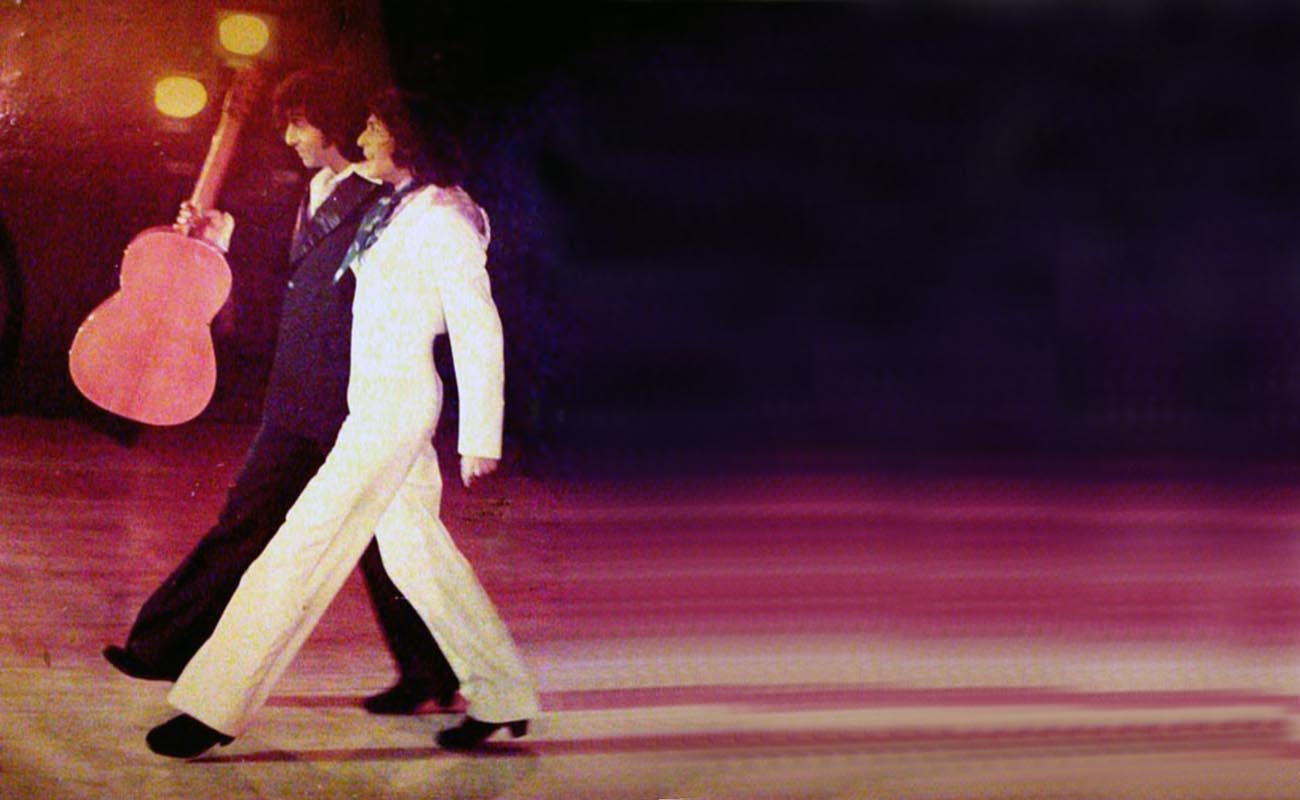Remembering Manolete (1945-2022)
Manuel Santiago Maya, Manolete. That minimalism, that presence that filled the stage, flamenco served straight up by Manolete of Granada whom we shall not again see.

It was astonishing that night. The patio of the Fuenlonguilla, 2001, traditional venue of the Reunión de Cante Jondo de La Puebla de Cazalla, full to the imaginary rafters with a respectful grateful audience as each year in this historic festival, one of the oldest in Andalusia.
When it came time for dance, Manuel Santiago Maya Manolete appeared on stage, and it was as if an electric charge caused hundreds of Japanese flamenco fans, whose presence I hadn’t noticed until then, to jump up from their plastic chairs. It was like flowers spontaneously, automatically sprouting from a garden of flamenco followers. Manolete radiated sobriety, dignity and elegance in his classic alegrías. Those who had jumped to their feet wanted to remain standing during the dance, but protests from the rest of the audience convinced them to sit down.
The dancer’s tense serenity was a poem of high art that triggered continuous shouts of “maestro!” that filled the night air. Only on one previous occasion had I observed such extreme adulation for a flamenco interpreter, which was when Camarón appeared at the vast Madrid sports court in the 1970s, and the venue was packed to overflowing with entire families.
When Manolete’s dance ended that night in La Puebla, once again his admirers from abroad jumped to their feet as one single person. The applause sounded like uncontrolled fireworks and the fans didn’t sit down despite the half-program still awaiting. As if triggered by a spring, and having seen what they came to see, they filed hastily and quietly out the door, and the patio was left half-empty. Such was, and continues to be the extreme and absolute admiration for this brilliant Granada dancer who left us orphaned just a few days ago.
Dancing which is geometric, but never cold. Eloquent minimalism. That’s the identity of this source which is Granada in the form of Manolete, his face and figure chiseled in granite, the perfect image of an elegant patriarch with the added blessing of having been able to be a great communicator of his flamenco knowledge for the new generation.
Manuel Santiago Maya, an important piece of the best flamenco dance, is gone. His style of cubist lines was able to influence other top dancers of the genre such as the Farrucos, Antonio Canales and El Güito among others.
At this moment it’s impossible to avoid thinking of his brother, Juan Maya Marote, the reflection of Manolete in guitar who left us in 2002, and had also been a dancer in his early years. I see the two together in the image that heads this text, proudly strutting in perfect harmony, supporting one another as they head for the flamenco truth.
Veteran Granada dancer Antonio Santaella, who has prepared so many young aspiring flamenco dancers, had these words upon hearing the news: “Manolete had a clean perfect line, he made everything look easy. His footwork was strong and impeccable, his line was drawn by the gods. Three names identify that era of flamenco dance: Mario Maya, El Güito and our man Manolete”.
That minimalism, that presence that filled the stage, flamenco served straight up by Manolete of Granada whom we shall not again see.






